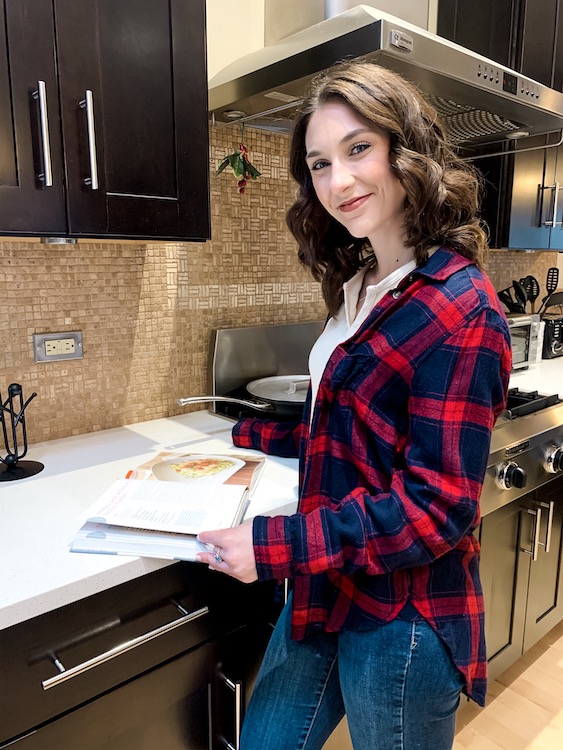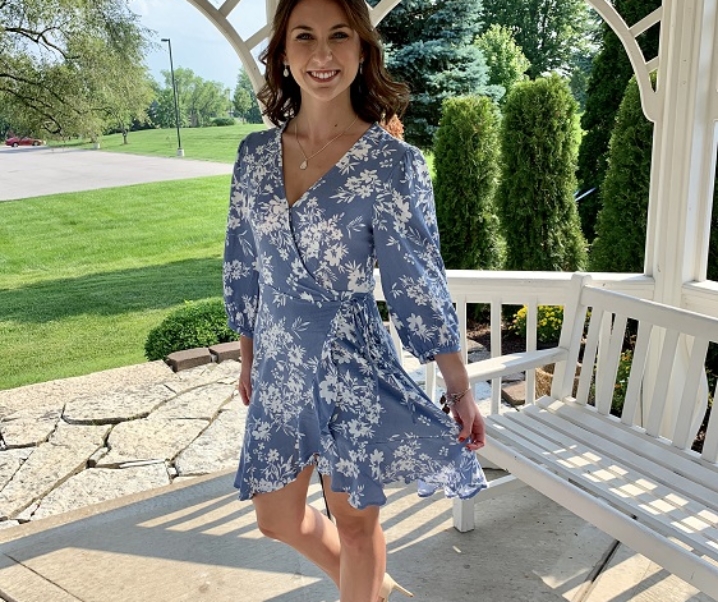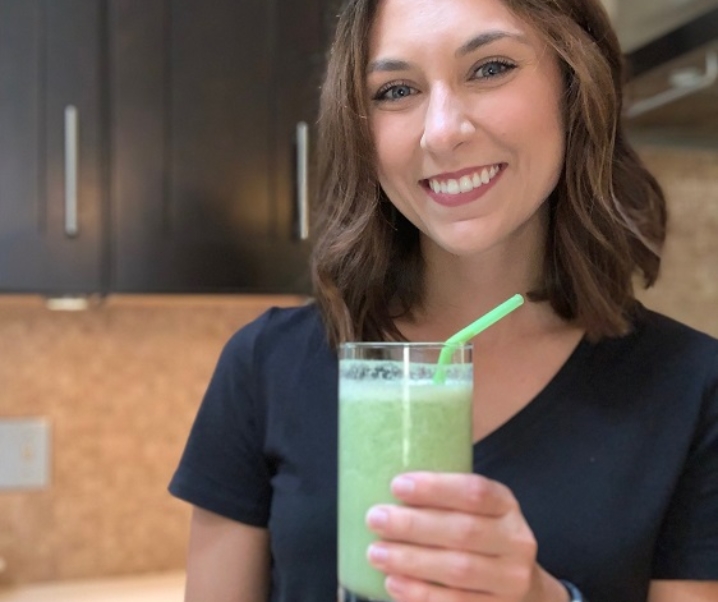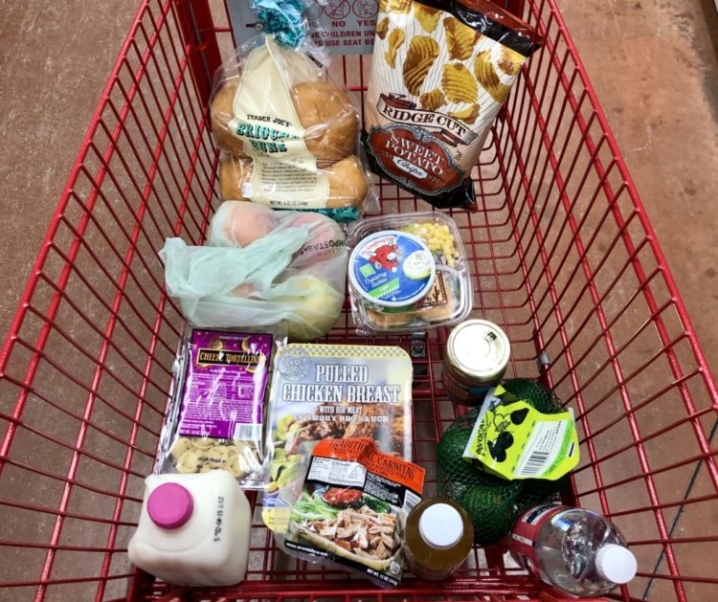It is finally here, the end of my Whole30 journey. It was quite the experience and I loved every minute of it. The Whole30 is full of ups and downs, but I would recommend it to anyone considering to try it. Below I’m sharing my tips on how to survive, how you will feel, and my post Whole30 plans. As always, reach out with any of your Whole30 related questions. I want to be a resource for all of you!
Disclaimer: It is important to be healthy in a healthy way (physically, mentally, and emotionally). I always recommend eating 3 full meals a day with snacks and focusing more on what you’re eating vs. how much you’re eating. If you struggle with your eating habits, reach out to someone you trust for help.
How to survive the Whole30
When thinking back on how I survived the Whole30, there are 3 main tips that come to mind. These tips are especially applicable if this is your first time doing the Whole30.
1. Expect a tough first week
First and foremost, week 1 will be challenging for a number of reasons. You will be fighting your regular food cravings and habits. A conscious effort is required every minute of every day to stick to the Whole30. Each time you eat, you need to remember to check the ingredients and make any necessary substitutions to stay Whole30 compliant. It won’t be easy because it is not what you are used to, but trust me, it is possible. After you get through the first week, the Whole30 will be surprisingly easy!
During the first week you will also struggle with cooking. If you’re anything like my family, many ingredients in your home will not be Whole30 approved. It is important to plan in advance, review what is compliant, and start stocking up on compliant options. We found ourselves at the grocery store a lot the first week. The transition to Whole30 compliant foods can be a bit expensive because you are stocking up on new staple items, however, it does not have to be. The more you prepare recipes and create a plan, the less stressful and expensive the process will be. Keep in mind though, healthy foods are more expensive than unhealthy foods. That is true whether you’re doing the Whole30 or not.
Lastly, you will no longer have go-to meals or snacks. That is probably the hardest part about the first week. You simply do not always know what to eat. You need to have all main meals (breakfast, lunch, or dinner) planned. Figuring out snacks you enjoy will come with time.
2. Stock up on go-to’s
Building off my first point, it is important to begin stocking up on Whole30 go-to items. That was a major challenge during the first week. Sometimes, there were no snacks available. Other times, there were snacks I was trying for the first time and did not really like. Additionally, previous recipes I’d make in a crunch were not compliant. Finding new go-to items is SO important to survive the Whole30.
Below are some of my favorite snacks and recipes. Obviously, everyone has different taste buds so these may not work for you. I do believe these are a great place to start trying though!
Snacks
Trader Joe’s Specific Items
Recipes
I’ve linked some of my favorite recipes below. Recipes are great to get your started but the true value of Whole30 comes when you learn how to modify your go-to recipes to be Whole30 compliant. Not only will you enjoy these meals more, you will also educate yourself on how to sustain a healthy lifestyle after the Whole30. Olive oil and seasoning is such a simple, affordable way to cook or modify your usual recipes.
A lot of the recipes we made were from the Whole30 book, so I’ve linked similar options online. I also just typed out meals made frequently that can be modified to taste. As mentioned, we started modifying our favorite recipes by swapping in approved ingredients. I’d recommend buying the book for additional recipes!
- Shrimp Scampi by FitSlowCookerQueen
- Steak and Veggies by WholeKitchenSink
- Meat with olive oil and seasoning, potatoes (sweet or regular), and veggies
- Smoothies with unsweetened almond milk, organic apple juice, frozen fruit or greens, and almond butter
- Soup with approved broth and substituted any noodle using zucchini noodles or cauliflower rice
- My green smoothie – I swapped in approved apple juice and used almond milk instead of yogurt. You can use extra ice to thicken it if needed.
- Homemade burgers using ground beef, approved seasonings, and 1 egg then topping the burger with tomato, onion, avocado, etc.
3. Don’t be too hard on yourself
My final piece of advice to survive the Whole30 is to go easy on yourself. Especially if this is your first Whole30. You will be much more motivated to continue if you fit the Whole30 into your lifestyle. The Whole30 is very strict and people often fail at it because of that. I personally did not do a true Whole30 my first time through. I still felt the benefits and have gained valuable lessons by completing the Whole 30. If you complete the challenge perfectly, then that is a bonus in my book.
Each time you complete the Whole30 you can work on improving. I travel a lot for work and I knew that I could not stick to the challenge perfectly. I was realistic with myself and made a plan to do my best. The next time I do the challenge, I will try to improve even more. I promise you will still gain the benefits, even if some modifications are made.
How I felt during the Whole30
Week 1
This was probably my most commonly asked question, how did I feel during the Whole30? Week 1, I was extremely motivated. I was excited to try new recipes and learn about being healthy. During week 1, I was also intrigued by the challenge. I wanted to see where it could take me and I already felt the benefits. Throughout the first week I noticed I never felt bloated, my jeans slipped on with ease, and I had a ton of energy. Overall, after week 1 I was extremely happy.
Week 2
Week 2 changed things a bit. In week 2, I was traveling for work. I made all Whole30 compliant choices, but was surrounded by non Whole30 compliant food. My first Whole30 slip ups occurred by incorrect orders being delivered, but I knew that was a possibility. It took some serious will power in me to resist the chocolate candy, cheddar muffins, and french fries. However, I felt so proud of myself when I did. I also realized that the craving is only present in the moment. After the meal, I did not regret my choices one bit.
Week 3
During week 3, I traveled again. Following the same mentality, I made Whole30 compliant choices but this time I felt more frustrated than before. All I wanted was for the Whole30 to be over. After stressful days of work, the Whole30 was the last thing I wanted to be doing. I really appreciated how good the Whole30 made me feel. I was still feeling light and tight, no bloating, and great energy. How I felt really helped me power through week 3.
Week 4
Lastly, week 4 was the easiest and the hardest all at the same time. At this point, my post Whole30 plans had been identified and I was ready to begin those plans. As you all know, I did not complete a perfect Whole30. On some days I cheated, I actually missed doing the Whole30 and how it made me feel. This made week 4 easy in the sense that I was not ready to be done. Week 4 was a combination of emotions. I would sum them up by saying I was ready to be done with the official Whole30 and was ready to begin starting Whole30 as my normal lifestyle.
Whole30 Feelings Every Day
Every day I followed the Whole30, I felt lighter, tighter, less bloated, high energy, and a positive attitude. I did not lose a ton of weight from the Whole30 and I was not intending to. The total weight I lost was no different than typical daily weight fluctuations. Internally, I felt like I’d lost 10-15 lbs just from bloating. I felt healthy. For me, that is more important than any number on the scale. I believe that is the most powerful impact from the Whole30, the way you feel.
Whether your want to lose weight, clear your skin, diagnose a food intolerance, or any other goal. At the end of the day, the way Whole30 makes you feel will be the most powerful and impacting takeaway from the experience.
My Post Whole30 Plans
I’m done with the Whole30, now what? I used to think I followed the 80/20 rule when it came to being healthy. The Whole30 really shed light on how untrue that was for me. I realized how many times I had to make conscious changes to be healthy. It was more than 20 percent of the time and I more realistically followed a 50/50 or 60/40 model.
Being a math girl, I wanted to calculate what an 80/20 lifestyle would actually look like. There are a number of ways to break it down either by days per week, meals per week, days per month, etc. Note: Cheat days / healthy days will look different for each person depending on their goals.
- Days per Week: 80/20 by the days per week would mean around 5-6 days of being healthy with 1-2 cheat days each week
- Meals per Week: 80/20 by the meal would mean 17 healthy meals and 4 cheat meals (assuming 3 meals per day)
- Days per Month: 80/20 by the days per month would mean 24 days of being healthy with 6 cheat days
You can calculate the 80/20 in a variety of other ways too. What these calculations showed me though was the variability in what an 80/20 lifestyle should actually look like. Previously, I followed the days per week method and would aim to only have 1 cheat day, 2 max per week. Turns out, this method was not practical for me.
If I travel Monday, go on a date with my boyfriend Friday, and watch a basketball game with my girls on Saturday (what this week actually looks like for me), that could easily become 3 cheat days without much flexibility. When I started thinking of the 80/20 in this light, I realized I needed to take a different approach.
How I Plan to Use What I Learned
Post Whole30 I’m planning to follow the 80/20 meals per week method because I think this will be the most practical for my lifestyle. In the above example, I could eat healthy for breakfast and lunch and only cheat for those dinners. That puts me at 3/4 of my planned cheat meals giving me some wiggle room if I end up super busy on Sunday.
I don’t know about you, but I feel like focusing on a cheat meal will also help prevent me from overindulging too much. In all honesty, if I ate unhealthy for lunch I was 10x more likely to be unhealthy for dinner because it was a cheat day. I would find myself feeling stuffed, bloated, and overall gross. I think confining these “cheat meals” will help prevent me from feeling that way.
These “cheat meals” I talk about will differ depending on your personal goals. If you’re gluten free, carb free, avoiding processed foods, following portion control, etc. Anything you are doing to make yourself feel good qualifies as a healthy meal and anything outside of that would be your personal cheat meal.
For me, after the Whole30 will mean clean eating with cheat meals. Seeing how I felt during the Whole30 has inspired me to eat clean, incorporating more whole foods as a part of my regular diet. I realized how often I was not eating those types of foods. Although my meals won’t be as strict as the Whole30, I will use what I learned to eat more whole foods and good ingredients. I will then aim for 4 cheat meals a week. This method will keep me feeling good but also give me flexibility to splurge as needed.
If you have any additional questions about the Whole30, please reach out. I’d love to help you through your Whole30 journey! As I said before, I would 100% recommend it to anyone.
XOXO,
MegMat




























What do you think?